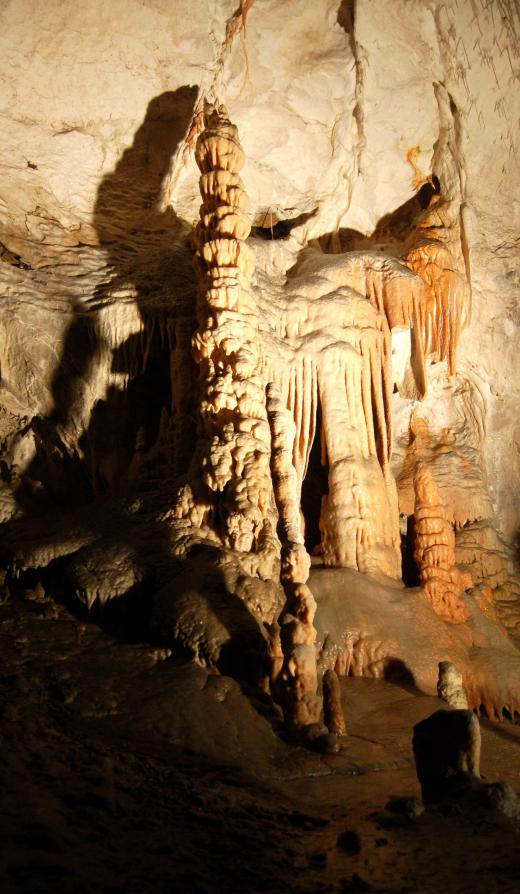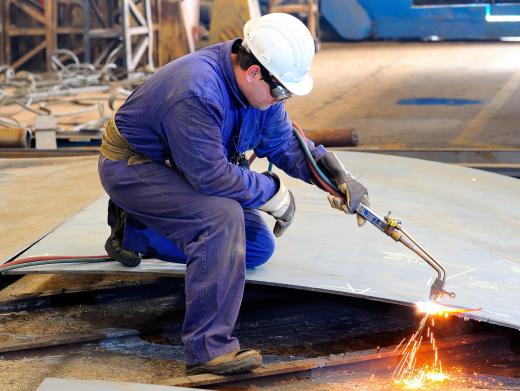What is Calcium Carbide?
Calcium carbide is a chemical compound containing calcium and carbide, with a chemical formula of CaC2. Pure calcium carbide is colorless, but most of the material is produced industrially, and is somewhat impure, giving it a black or grayish-white color, depending on the quality. The main use for this substance is in the production of the flammable gas acetylene.
It is necessary to produce calcium carbide industrially, because it is not naturally occurring in large amounts. Very high temperatures, on the order of 3630 degrees Fahrenheit (2000 degrees C) are necessary to produce the material. It is made in a type of furnace called an electric arc furnace, which can reach temperatures much hotter than those that are obtained through simple combustion. The basic chemical process used to make the material has not changed since it was discovered in 1888.

When any grade of calcium carbide comes into contact with water, a chemical reaction immediately begins, which yields two new compounds, one of which is acetylene, a very useful flammable gas. Countries such as China use large amounts of acetylene as an industrial fuel, mainly because it is cheaper to make and use domestically than to import petroleum for the same purpose. Oddly enough, acetylene can also be used to speed up the ripening of fruit, in the same way that ethylene is used.

Another use of calcium carbide is in the making of some types of fertilizer. Calcium cyanamide is one of these, and is produced when calcium carbide reacts with nitrogen at high temperatures. Some steelmaking processes also require the use of this material.
One of the older uses of this material was in a device called the carbide lamp. This was a type of lamp that took advantage of the fact that water and calcium carbide react together to make acetylene. These lamps were used in mines beginning in the late 19th century. The open flame produced by the burning acetylene in the lamp ruled out its use in coal mines, but miners of tin, copper and slate were able to benefit from its use.
Carbide lamps were also used as lighthouse beacons, and even as headlights in automobiles and on bicycles. Their use is rare today, and is mainly limited to hunting and cave exploration, and even here, better lighting options are usually available. It is important to remember that the acetylene produced when calcium carbide comes into contact with water is a highly flammable and potentially explosive gas, and safety precautions should be taken accordingly.
AS FEATURED ON:
AS FEATURED ON:












Discussion Comments
How do you dispose of 50 year old containers? Is it harmful to skin?
what are the most common impurities in calcium carbide?
Post your comments